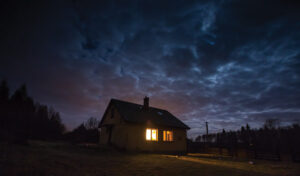
This winter has been bitterly cold, and I hope you and your family have remained warm and safe. Before we know it, we’ll be enjoying warm, sunny spring weather, but no matter how long good weather lasts, storm clouds will roll in sooner or later. Mother Nature can quickly bring thunder, lightning, high winds, tornadoes, hail and flooding right to your doorstep. I don’t mean to “rain” on those thoughts of sunny spring weather you just had, but I do want you to take time now to protect yourself and your family by preparing for severe weather before it strikes.
Making plans now just might save lives when floodwaters are rising, or a tornado is bearing down on your home.
Assemble necessary supplies for a potential outage. Your emergency preparedness kit should include items such as water, food, flashlight, batteries, blankets and a first aid kit. A full list of suggested items can be found at SafeElectricity.org.
The National Weather Service recommends you:
* Know what county you are in and nearby towns and cities. Warnings are issued by county and reference major cities.
* Know the difference between a severe thunderstorm watch and warning. A watch means there is the possibility of storms, and a warning means a storm has been reported and you should take cover.
* Check the forecast and the hazardous weather outlook.
* Watch for signs of an approaching storm.
* Turn on a weather radio or an AM/FM radio for information if a storm is approaching.
* Stay inside if you know a storm is headed your way.
Plan ahead so you do not get caught outside in a storm. Lightning can strike up to 10 miles from the area in which it is raining, even if you do not see clouds. If you can hear thunder, you are within striking distance.
If you are inside when a storm hits, stay inside. Keep away from windows and go to the lowest level of your home. If you do get caught outdoors during a storm, and are unable to take shelter in a building, try to take shelter in an enclosed vehicle with a hard-top roof, not an open-frame vehicle like a convertible. Do not seek shelter under or stand near trees, canopies, small picnic or rain shelters, fences or poles. Avoid water, high ground and open spaces.
If outside during a tornado and you cannot find shelter, do not take cover in a vehicle or under a highway overpass. Find a ditch or ravine, lie flat and clasp your hands behind your head to protect yourself from flying debris.
Most severe storms do not last more than a half hour; however, just because a storm has passed does not mean danger is over. A variety of hazards are left behind.
Never touch downed power lines or objects in contact with those lines. Just because power lines are damaged does not mean that they are dead. Touching a downed line or anything it has fallen on, like a fence or a tree limb, could get you injured or killed. Stay away, and instruct others to do the same. If you come across downed power lines, call 911 and your utility immediately.
Take the time to prepare now before the storm, and pay attention to weather alerts to keep your family safe. Learn more at SafeElectricity.org.








